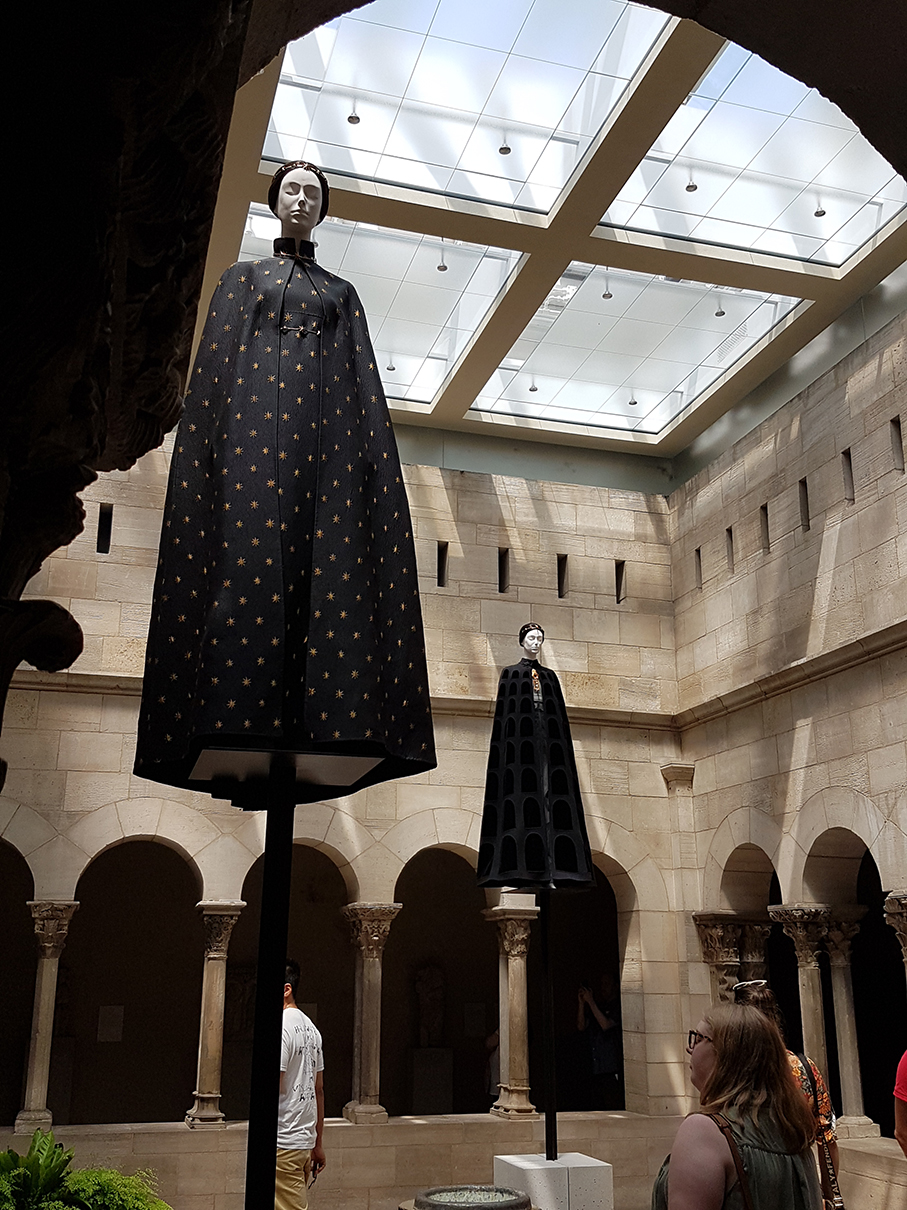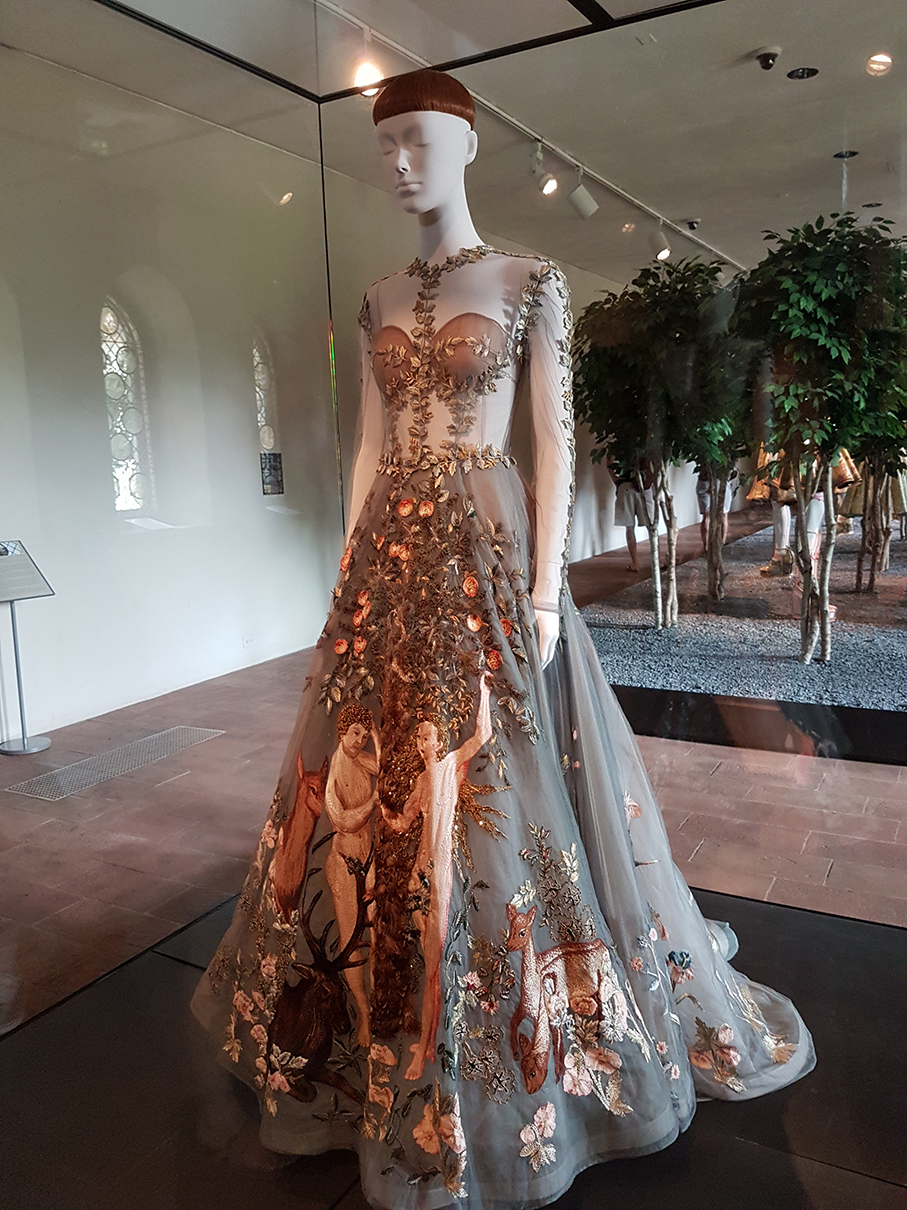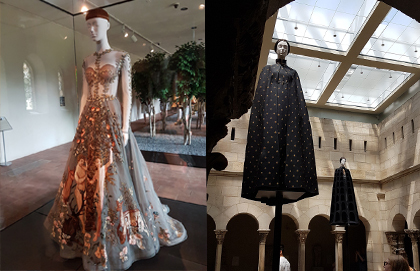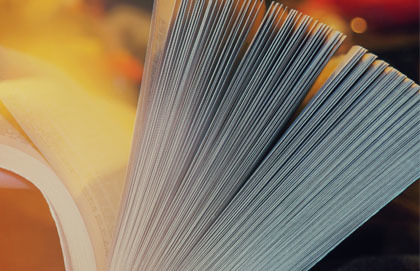Over the Canada Day weekend, I did what any maple-blooded Canadian would do – I took a flight to Manhattan for the long weekend. Aside from telling all the American waiters that it was Canada’s birthday, I also took time to visit the Heavenly Bodies: Fashion and the Catholic Imagination exhibit at the Metropolitan Museum of Art.
Andrew Bolton, the Wendy Yu Curator in Charge of The Costume Institute, chose the Catholic Imagination theme for the exhibit. This exhibit was celebrated by the May 2018 Met Gala, which saw stars such as Rihanna wearing jeweled bishops’ mitres and Madonna giving a performance of “Like A Prayer.” Headlines about the gala and the exhibit ranged from the New York Times’ “Make Catholicism Weird Again,” to Piers Morgan’s angry Daily Mail piece: “If the Met Gala was Islam or Jewish themed, all Hell would break loose – so why is it okay for a bunch of flesh-flashing celebrities to disrespect MY religion?”
All I knew was I couldn’t miss this show, and so with the help of many Ubers I visited the three locations of this “trinity” exhibit and saw for myself what the fuss was about. My conclusions? The show deserves all of its hype, and beauty may be the best gateway for us moderns to access the transcendent and have conversations about faith.
What I didn’t realize when I went to the first venue, the Cloisters in upper Manhattan, was that some of the world’s best designers had been called upon to create evening gowns and cocktail dresses inspired by Catholic themes. Valentino, Dolce and Gabbana, Christian Lacroix, among others created incredible pieces that were staged in the Cloisters monastery.
Visitors moved through rooms exploring themes such as marriage, monasticism, and Creation and were greeted by serene looking mannequins with closed eyes. In one courtyard exploring the Annunciation, elevated mannequins with star covered capes looked like they were slowly floating to earth and about speak to at any minute. In a beautifully lit chapel, a bride in her gown stood in prayer at the altar: it felt like the morning of her wedding before anyone arrived.

Walking through the exhibit, it was hard to miss the sense of a beautiful, hidden world of meaning that these clothes were pointing to – a world of sacred mystery that many modern urbanites don’t often encounter. I was especially struck by the artistry that went into the gowns, incredible fabrics, detailed embroidery, complex prints – this was haute couture incarnating the story of God in a new way. The proof of the appeal was that the place was packed.
The second venue in the “trinity” was the Met Costume Institute. It housed the special collection provided to the museum by the Vatican. Most of the pieces on display had never before left Rome. Visitors were prohibited from taking pictures. As one guard put it: “It was the Vatican that said no pictures, so you are taking your soul in your hands if you do.” Guests giggled.
There were papal vestments embroidered with gold threads, satin red shoes, and a box with gold and the silver keys of St. Peter that looked really heavy. In the treasury room were papal rings in gold, three-tiered tiaras with thousands of diamonds, gifts over the centuries of European queens to the Pope. There were incredible pieces that would rival the British Crown Jewels.
One reaction to this part of the collection has been: “If the Church cares about the poor, it should sell this stuff and use the money to help them.” The response from some commentators has been that these vestments show the dignity of the Mass in which case, if it really is God coming to the altar, then nothing is beautiful or magnificent enough. Agree or disagree, people were talking about the Church, the Protestant Reformation, indulgences and so on. Some of it was accurate. Some wasn’t. What mattered was people having real conversations about religion and history because of the collection. It was a welcome departure from Twitter, Facebook or political commentary.
My final stop was the medieval section of the Metropolitan Museum where the collection took on a more urban look. The two hallways leading to the exhibit were lined with a runway of elevated mannequins, wearing metallic cocktail dresses. Inside, were more amazing pieces including the “Madonna” wedding ensemble by Dior, various chic Dominican habits and what can only be described as angel wear. Again, the room was full of people who just stood and stared at these fashion creations, shuffling along in front of displays to have a moment with each.

In a world where art can be ugly – think “Piss Christ” which had a lot of buzz but probably not such an engaged audience – the collection was full of the kind of clothes one might dream of wearing as part of the cast of the Lord of the Rings or the Princess Bride. At the end of the day, people know the difference between good and bad art.
Were there some risqué pieces in the collections? Yes, including a brown monk’s habit that had a perfectly sized hole sewn into the crotch area to evoke “the literary stereotype of the lecherous, debauched, and scandalous medieval monk.” There were also a few pieces that might remind one of a dominatrix. But they could be counted on one hand.
On the whole, the collection gave the impression that the Catholic imagination is inspired by a story about a God who loves the world and came into the world to save humanity. And this story has power to inspire new creations like the flashy Met Gala, this incredible fashion collection, and great conversations between patrons. So, get down there folks and check it out. You have until October 8th.
Convivium means living together. We welcome your voice to the conversation. Do you know someone who would enjoy this article? Send it to them now. Do you have a response to something we've published? Let us know!








